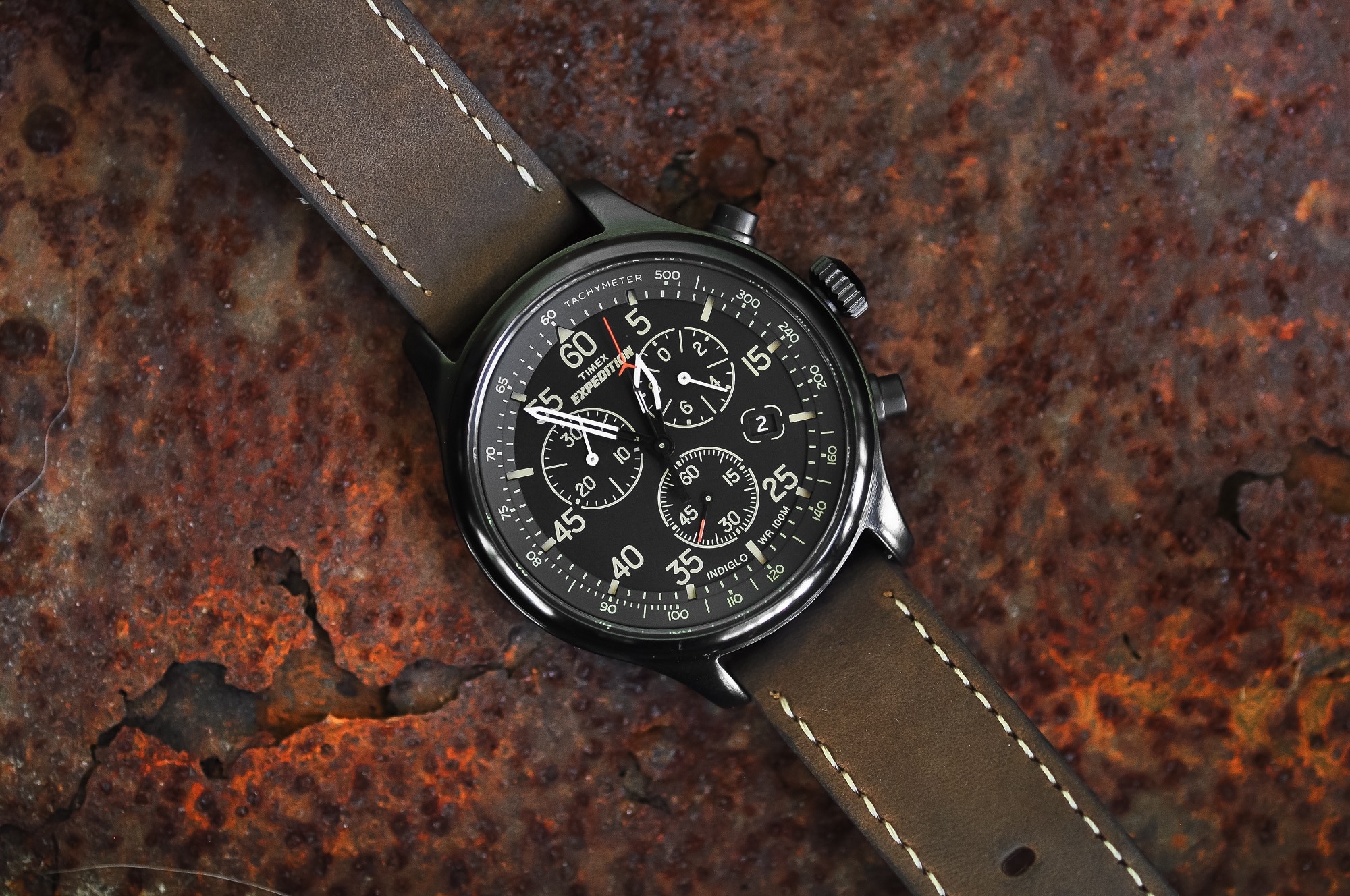What is a chronograph watch? Well, it’s a wristwatch that doubles as a stopwatch; you have your regular timekeeping hands, and then a separate timer that you can start, stop, and reset with pushers on the side of the case.
The appeal extends beyond its appearance (though those sub-dials do lend it a cool, busy aesthetic). Whether you’re going for a morning run or making sure your pasta doesn’t turn to burnt residue, there’s something nice about the precision.
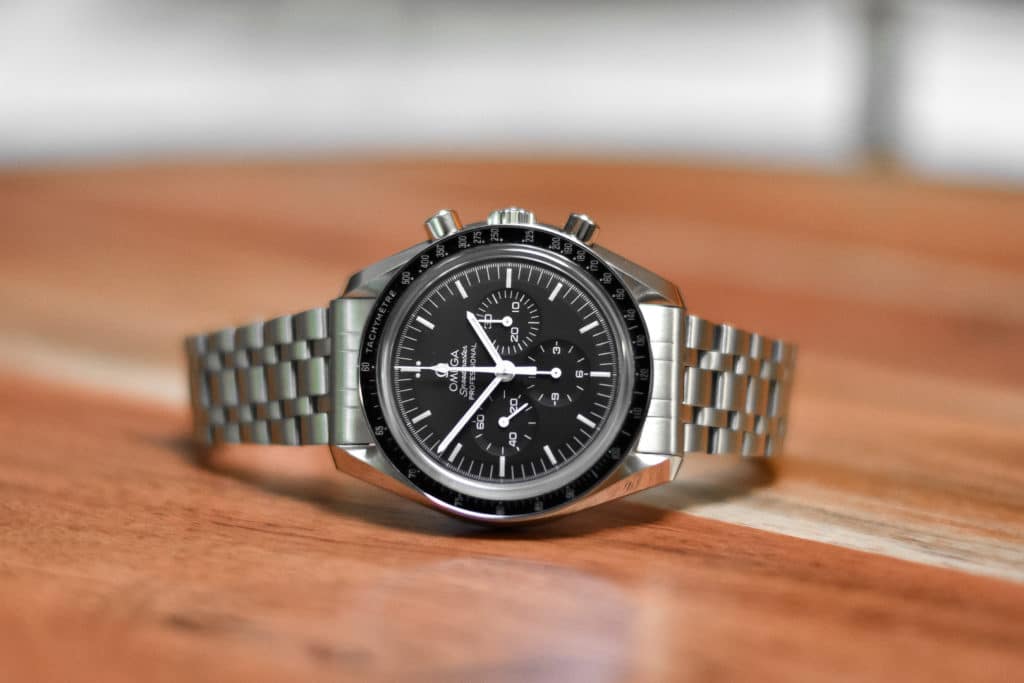
Even if you never use it to time laps or calculate speed with a tachymeter, it still feels good knowing you could. That’s probably why we see chronographs stick around with racers, aviation enthusiasts, gearheads, hobbyists, or anyone who prefers their watches to have a bit more functionality than three hands and a date window. Of course, appreciating a chronograph is one thing. Understanding how it works is where it becomes interesting.
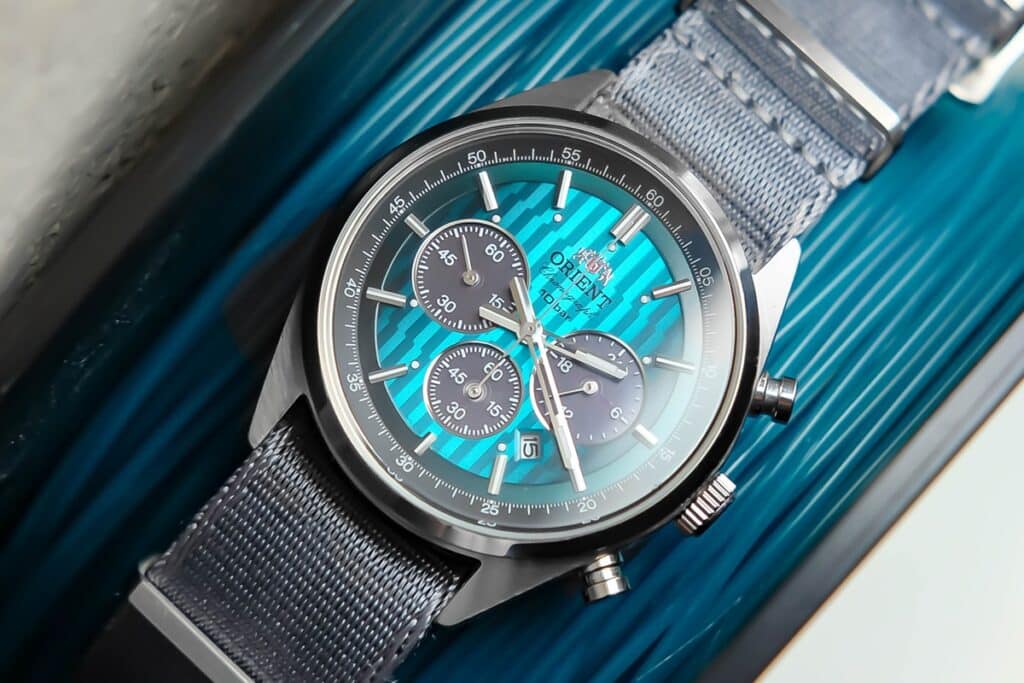
How Does a Chronograph Work?
The first time you mess around with a chronograph, it feels like you’ve unlocked a secret level of watch ownership. Suddenly, there’s more going on than ticking hands.
1. Basic Functionality
A chronograph watch is a wrist-worn stopwatch with its own mechanical or electronic brain. You’ll see two buttons (called pushers) on the side of the case; these are what make the magic happen.

- Top pusher: Starts and stops the chronograph function.
- Bottom pusher: Resets everything back to zero.
- Central seconds hand: Kicks into gear when the chronograph is running.
- Sub-dials: Track elapsed minutes (and sometimes hours), depending on the watch’s layout.
You can use the chronograph without interrupting regular timekeeping, so you’re free to time a race, your plank, or your pointless office meeting without affecting the actual time.
Did you know? Some chronographs use a “flyback” feature, letting you reset the timer while it’s still running. Handy in aviation, or for impatient users like us.
2. Common Layouts and Scales
Once you get past the basics, you’ll notice that chronographs come in a few distinct visual formats. Some look cleaner, others busier, but they all serve a purpose.
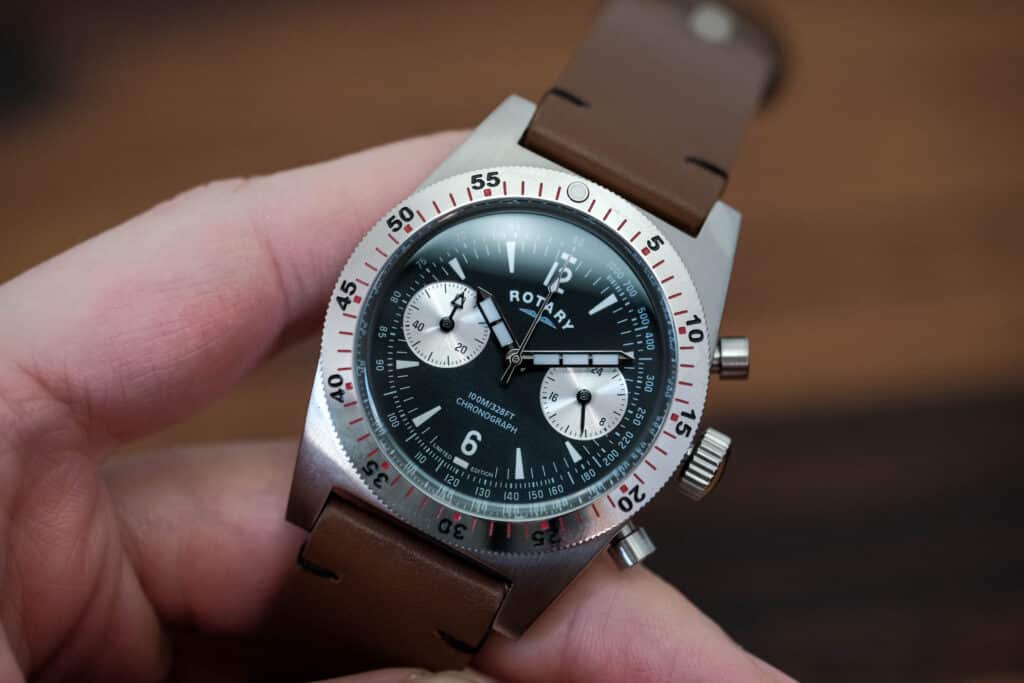
Bi-Compax vs. Tri-Compax Layouts
- Bi-compax: Two sub-dials, running seconds, and a 30- or 60-minute counter. Suitable For: Keeping things clean and readable, if you don’t need to time anything longer than 30 or 60 minutes.
- Tri-compax: Three sub-dials; adds a 12-hour counter for long-haul timing. Suitable For: Timing an entire flight or a long meeting.
Did you know? The tri-compax layout gained popularity in the 1960s as brands like Heuer and Omega focused on timing for motorsports and aviation.
Timing Scales on Chronographs
You’ve probably noticed that some chronographs come with mysterious scales around the edge of the dial or bezel. Those aren’t only for decoration (though they do look cool). They let you measure more than time.
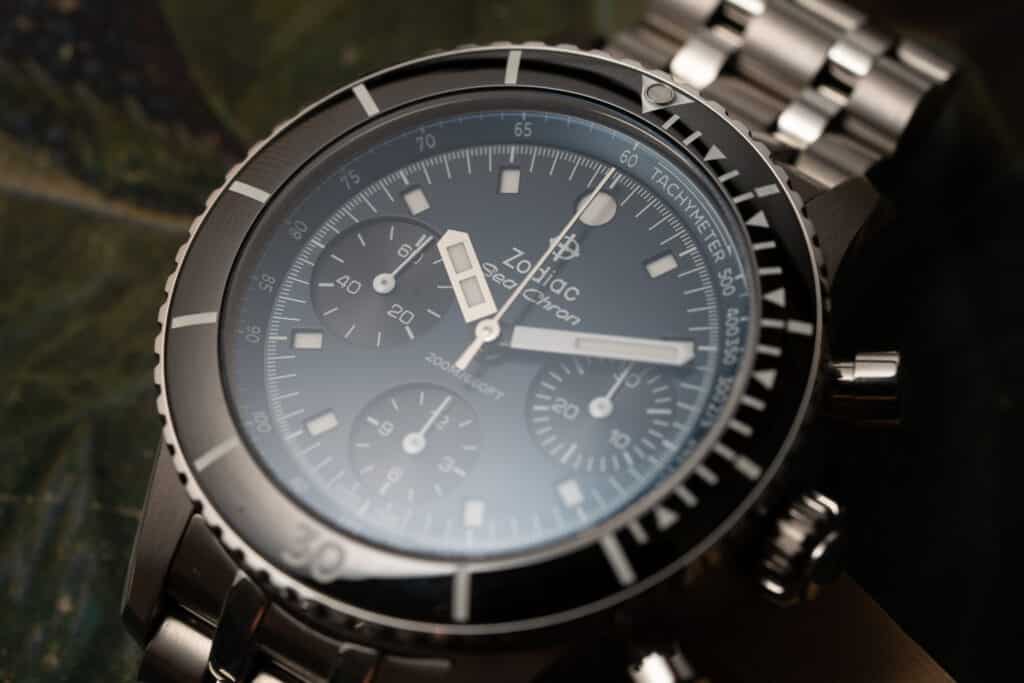
- Tachymeter: Helps you measure speed over a known distance. This is pretty useful if you’re driving on a track. Start the timer when a car passes a marker, stop it after one mile or kilometer, and read the scale to get MPH/KPH.
- Telemeter: Calculates how far away something is by measuring the time between seeing and hearing it. Great for determining how far away a thunderstorm is, based on the time between a lightning spark and thunder. Or artillery, if you’re into that.
- Pulsometer: Watches equipped with this feature are also known as “doctor’s watches” because they are used to measure heart rate. You count beats, stop the hand when it hits the marker (mostly 15 or 30), and read your BPM.
These aren’t mere vintage gimmicks. They’re part of what gives the chronograph its tool-watch charm.
Now, all this timing magic needs a movement to support it. Let’s understand the different types of movement in a chronograph.
3. Movement Types
Chronographs utilize various types of movements, each with its own trade-offs. Mechanical offers heritage and feel, quartz keeps it simple, and meca-quartz lands somewhere in between. Whether you’re after tactile satisfaction or low-maintenance convenience, there’s a movement type that’ll suit your wrist and your budget.
Mechanical Movements
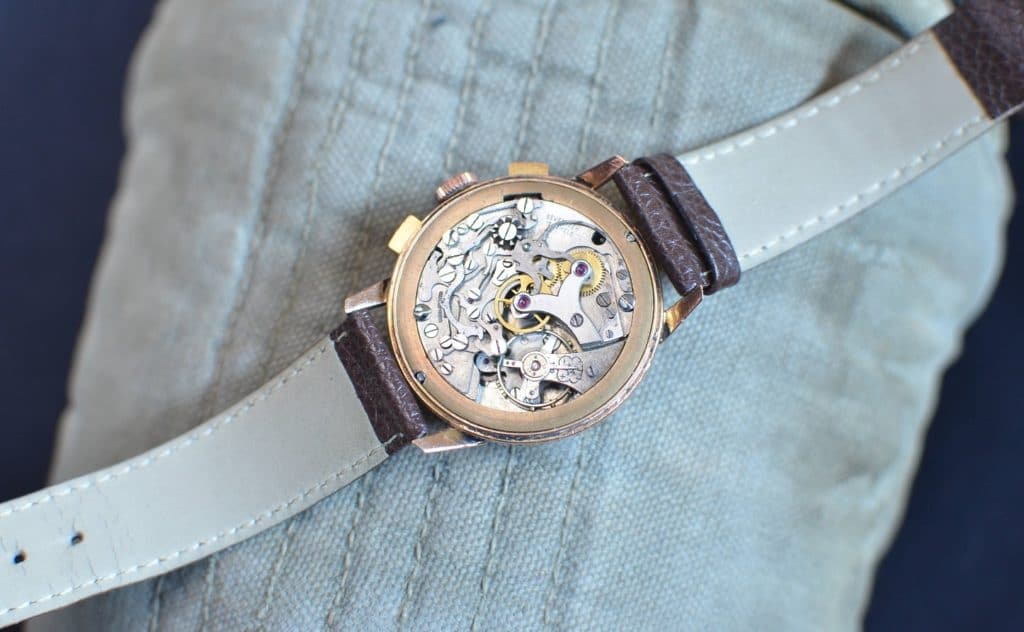
- Integrated chronograph: Everything’s built into a single movement. More expensive and technically complex.
- Modular chronograph: A chronograph module is stacked on top of a base movement. Easier to service and more common in entry-level mechanical chronos.
Both options provide a tactile pusher feel and sweeping hands, but integrated movements tend to be smoother, if you’re willing to pay for it.
Quartz Chronographs
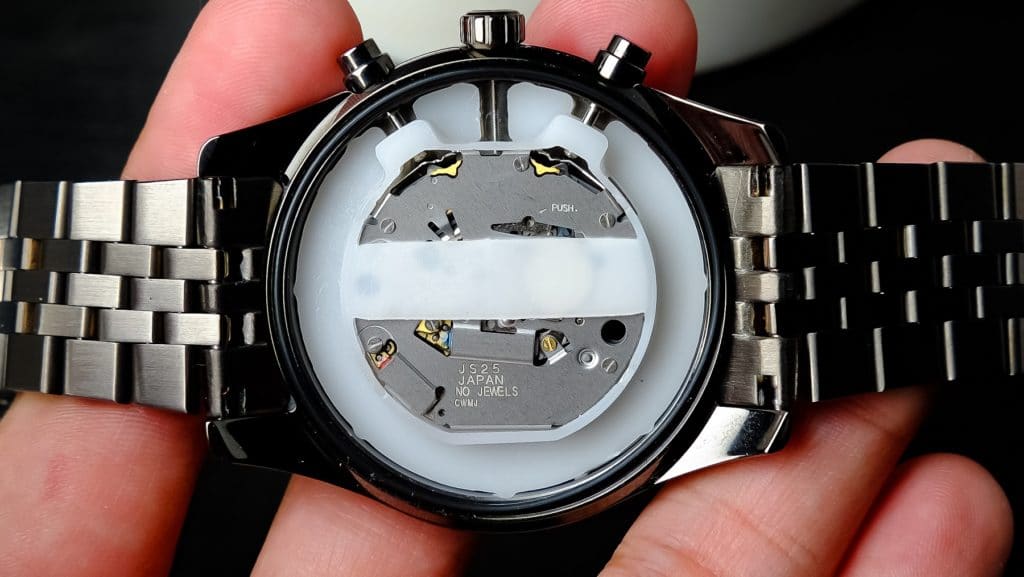
- Battery-powered: More accurate, less expensive, and easier to live with.
- The chronograph hand ticks rather than sweeping smoothly, but timing is spot-on.
Watch snobs may scoff, but quartz chronographs are great for everyday use, especially if you’re just starting out. Furthermore, if you don’t want to babysit a mechanical piece or spend a fortune on servicing it every few years, Quartz makes a lot more sense.
Meca-Quartz Movements
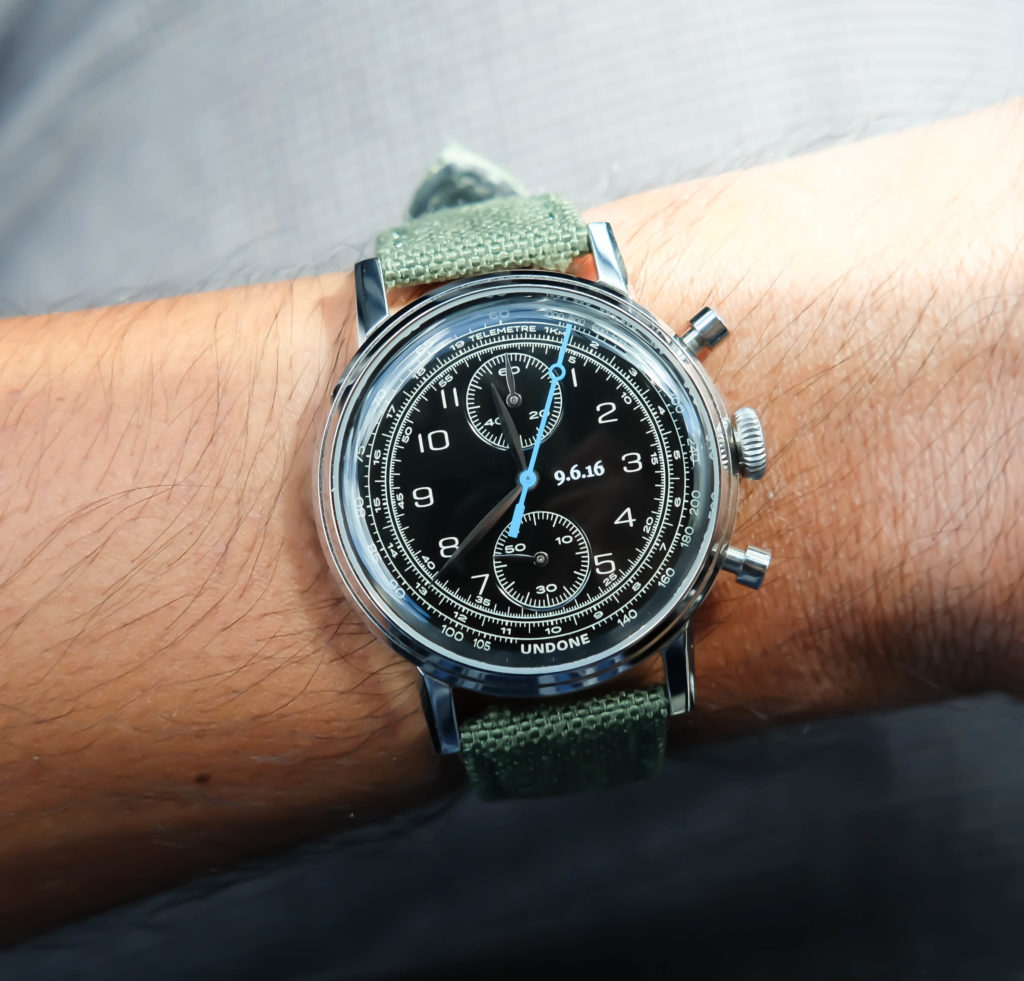
- Hybrid setup: Blends quartz accuracy with a mechanical-style chronograph feel. Timekeeping is battery-powered, but the chronograph module utilizes gears and a stepping motor.
- You get: A crisp pusher feel, smooth chrono seconds, and a battery that lasts for years.
This type hits a sweet spot for many enthusiasts, especially when you want a more tactile experience without the full mechanical price tag.
Did you know? The term meca-quartz mostly stuck with Seiko’s VH/VK calibers, thanks to clever marketing, not because they’re truly mechanical.
Having covered what makes a chronograph tick, it’s worth asking how it compares to other complications you’ll find on a watch.
Chronograph vs. Other Complications
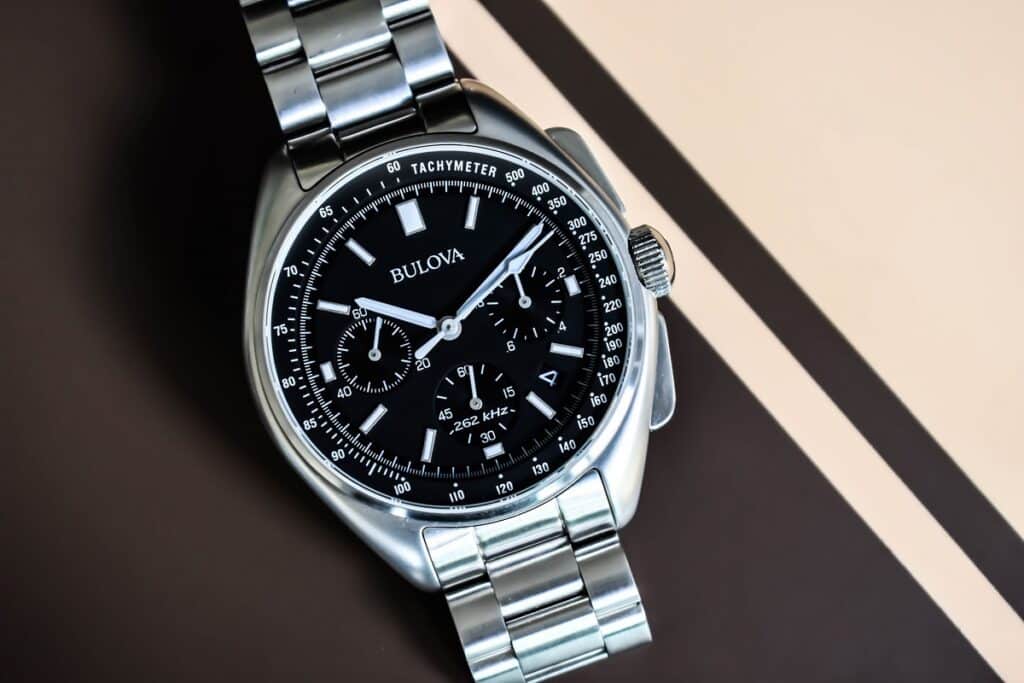
Chronographs aren’t the only way to measure time, but they offer a unique balance of function, interaction, and character. Compared to dive bezels, GMTs, stopwatches, or digital timers, they might be less straightforward, but they’re more versatile and a lot more fun to use.
If you’re after something that does more than just count seconds, a chronograph provides both the experience and the utility. Let’s compare chronographs against other popular complications.
Chronograph vs. Stopwatch
At a glance, they do the same thing: measure elapsed time. However, a stopwatch is a standalone tool, typically digital, plastic, and often stored in a drawer. A chronograph is a watch with a built-in timing function that lives on your wrist, always ready to go.
Functionally, both can start, stop, and reset. But a chronograph provides tactile interaction. You feel the pusher click. You watch the central hand sweep around the dial. It’s more engaging, less clinical. You probably won’t use it to time Olympic sprints, but for everyday stuff like workouts, traffic lights, or brewing tea, it’s more than enough.
Chronograph vs. Dive Bezel
A dive bezel is all about simplicity. Line it up with the minute hand, and you’re timing; there’s no thinking, no reset, and no tiny sub-dials to squint at. It’s quicker and often easier to read in low light or underwater (which is mostly a design nod for most of us).
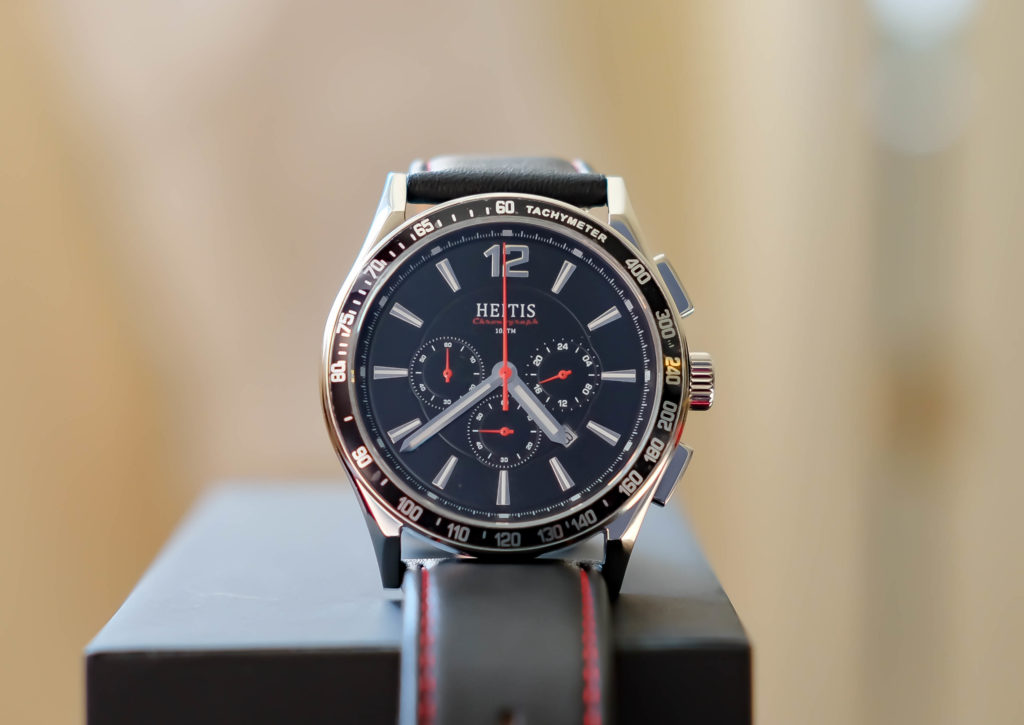

But a dive bezel only tracks one thing, up to 60 minutes. A chronograph lets you track seconds, minutes, and hours, all with independent hands. Yes, it takes longer to read. Yes, it clutters the dial. But if you want actual precision and flexibility, the chronograph wins.
Chronograph vs. GMT
A GMT complication is for tracking multiple time zones, not measuring elapsed time. It adds a fourth hand that rotates once every 24 hours and points to a second time zone. It’s perfect for travellers, remote workers, or anyone trying to keep tabs on another corner of the world without having to ask Google every five minutes.
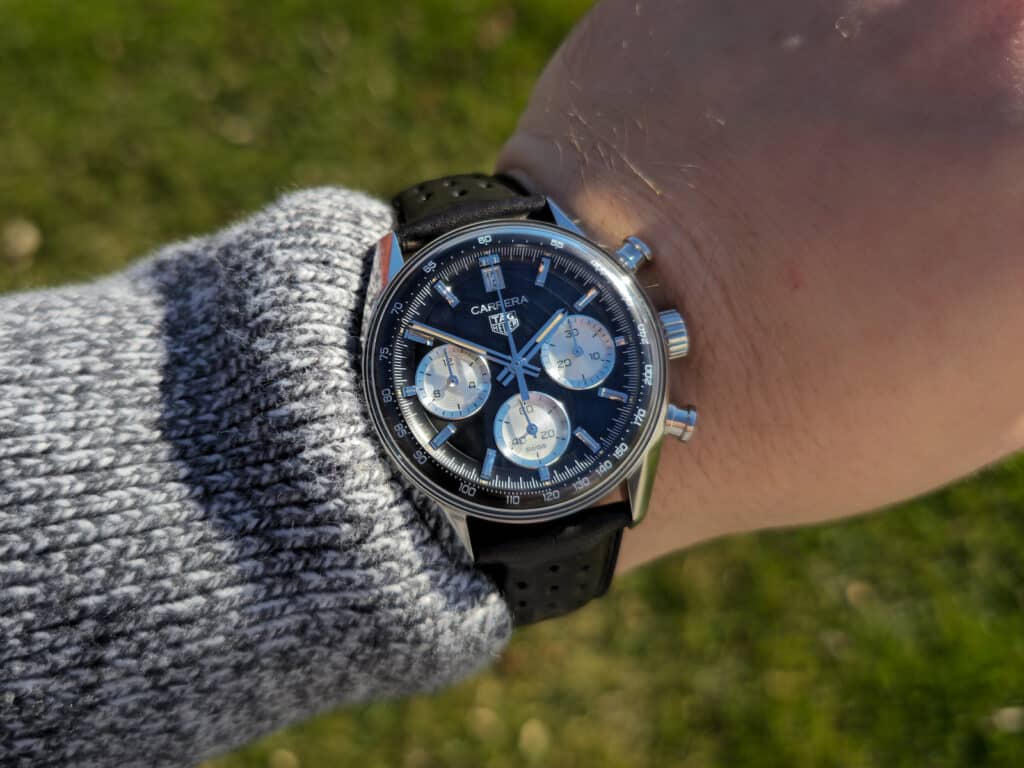
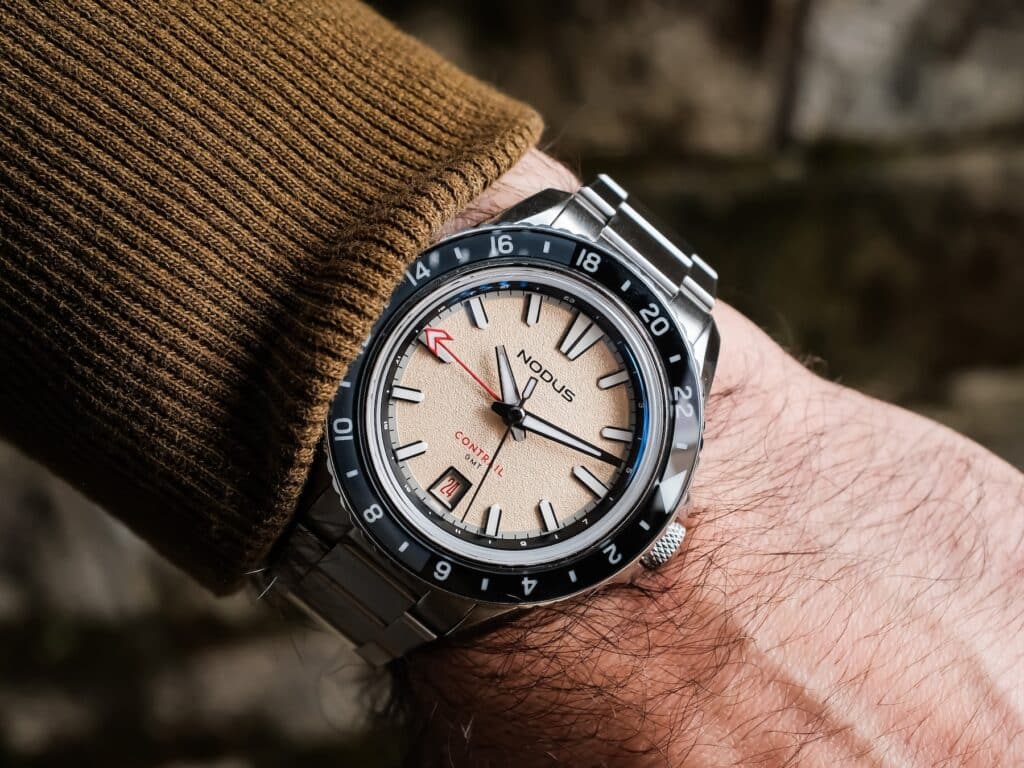
A chronograph deals in real-time intervals. Need to know how long your Zoom call lasted? That’s where it shines. So while a GMT looks outward, the other keeps us grounded in the moment.
Chronograph vs. Timer
Most digital timers are more accurate, more convenient, and less fussy than any mechanical chronograph. They beep. They count down. They don’t care how many jewels are in your movement. Your phone has one. Your oven has one. They work precisely. But that’s also why they might seem bland and soulless.
A chronograph feels like a mechanical ritual. You push a button, the hand jumps, the gears engage. It’s not as efficient, but it’s more satisfying. You’re not only setting a timer; you’re interacting with your watch. For some of us, that experience matters more than raw accuracy.
The Benefits and Trade-Offs
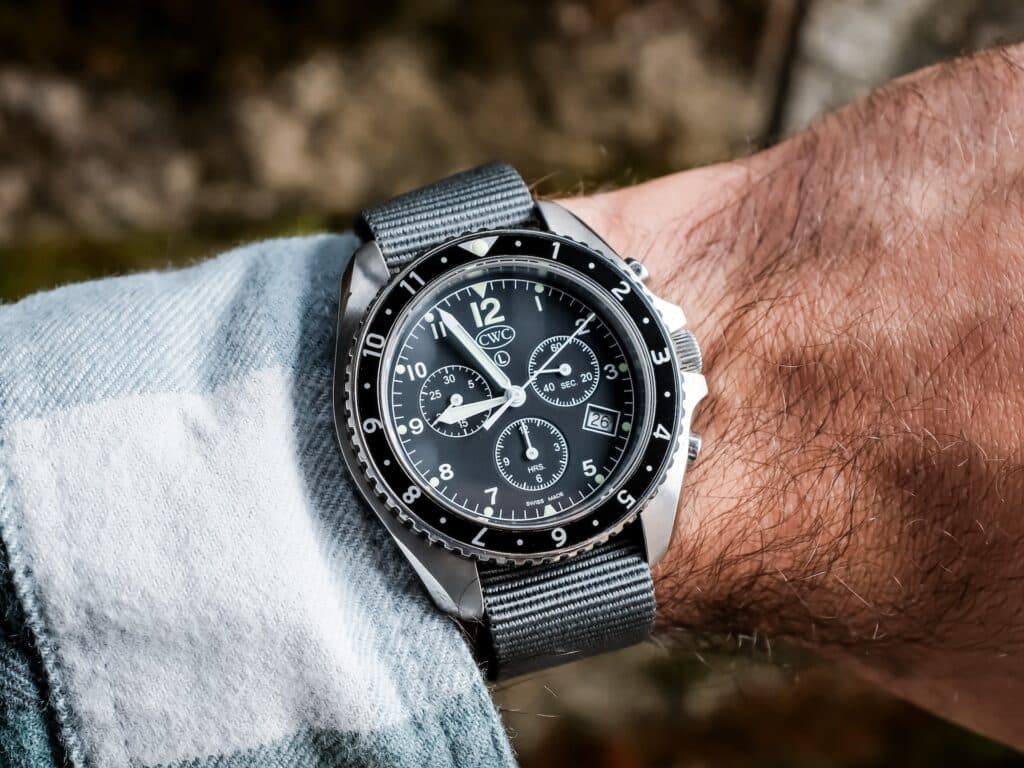
Every complication has a job that provides a specific benefit, and every job comes with trade-offs.
Chronograph Benefits:
- Can measure short time intervals precisely
- Feel more interactive and mechanical
- Add character and complexity to a watch
Chronograph Limitations:
- Sub-dials are more complicated to read at a glance than a rotating bezel.
- Pushers take a bit more effort than twisting a bezel.
- More moving parts translate to a greater probability of things going wrong (and cost more to fix).
- Tend to be larger
Dive bezels are intuitive and easy to use, particularly beneficial for underwater or low-light conditions, but have a limited scope.
GMTs are great for keeping track of two or more time zones, but don’t help with short-term timing.
Digital timers are precise and convenient, but they lack a personal touch.
If you’re still wondering what a chronograph watch is suitable for in daily life, the answer depends on how you plan to use it.
Chronograph Use Cases and Practical Applications

Chronographs may have emerged for use in cockpits and race pits, but today, their usefulness extends far beyond high-stakes environments. Whether you’re cooking dinner or tracking your time on a weekend run, there’s plenty you can do with a chronograph if you’re the kind of person who enjoys pushing buttons with a purpose.
Everyday Stuff that Matters
You don’t have to be a pilot or a racecar driver to make use of a chronograph. Most people use it for surprisingly everyday things, such as timing workouts, checking how long your coffee has been brewing, or ensuring your pizza doesn’t turn into charcoal.
It’s a mechanical reminder that time is passing, which, depending on your day, can be either helpful or slightly existential.
Running late for a meeting? Start the chrono. Need to check how long your car’s been at the parking meter? Chrono. Want to prove to yourself that your plank lasted longer than 45 seconds? You know what to do.
Tool Watch in Professional Settings
Chronographs do have a solid history in aviation and motorsports. Pilots use them for quick, in-flight calculations, such as fuel burn or time-to-target, more in older aircraft without glass cockpits. Drivers (or pit crews) can time laps and measure speed over a set distance using a tachymeter.
That said, for diving, a chronograph isn’t the most reliable choice. Sure, some are rated for water resistance, but those pushers aren’t always safe to use underwater. A dive bezel is simpler, faster, and doesn’t flood your watch when you press a button.
Collector Appeal and Visual Interest
Even if we don’t use it much, a chronograph still has its place in a collection. The sub-dials, pushers, and additional functionality add visual complexity. For many enthusiasts, that’s reason enough to wear one.
Plus, there’s some odd satisfaction about pushing buttons on a mechanical object and watching it respond. It makes the watch feel more alive, more connected to what you’re doing, even if what you’re doing is timing how long it takes to scroll through your Instagram feed.
Did you know? The chronograph complication has always been about timing things that matter. Louis Moinet built the first one in the early 1800s to track planets. King Louis XVIII wanted one for horse races. By the 1930s, Breitling had introduced the classic three-pusher layout that most of us associate with modern chronographs today.
If all this has you thinking about picking one up, here’s what to keep in mind before buying a chronograph.
What to Look for When Buying a Chronograph
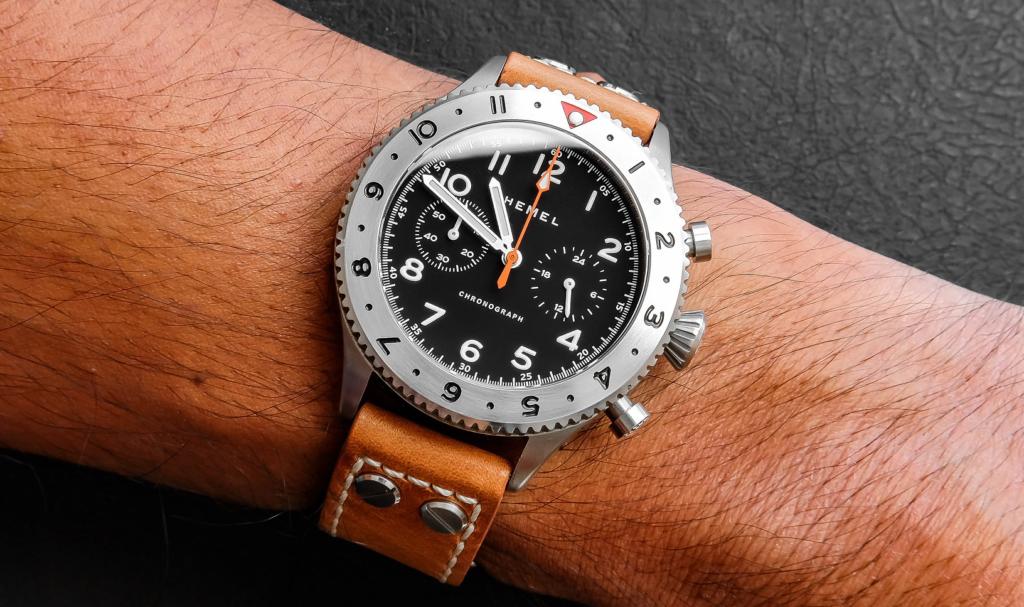
With so many chronographs out there, it’s easy to get overwhelmed. Whether you’re shopping for your first one or adding to a growing collection, a few key factors, such as budget, movement, usability, and personal style, can help narrow down your choices.
1. Start With Budget and Movement
Chronographs come in all types and price points, so the first step is deciding how much you feel is spending too much for status, and what kind of movement makes sense for you.
- Quartz chronographs are more affordable, easier to live with, and perfect for casual use. If you’re looking for something low-maintenance that works well, this is the place to start.
- Mechanical chronographs are pricier and a bit more demanding. But they bring that tactile satisfaction you can’t get from a battery-powered piece. If you’re drawn to the idea of gears ticking behind the dial, it might be worth the extra cash.
2. Layout, Readability, and Feel
Chronographs come in a variety of layouts, including bi-compax, tri-compax, crowded, clean, vintage-inspired, and modern minimalist designs. Choose one that you can read without squinting. Sub-dials should make sense to your eye, not just look cool in photos.
Also, don’t underestimate how the pushers feel. Some give a satisfying click, while others feel as if you didn’t press anything. If you’re buying in person, press the buttons. If you’re buying online, be sure to check the reviews. A chronograph is meant to be used; ensure it feels comfortable to use.
3. Think About Servicing
Mechanical chronographs have more moving parts than your average three-hander, which means more things that can wear out. If you’re going mechanical, look into the movement. Ask yourself these questions: Can it be serviced easily? Are parts available? Does the brand have a reputation for reliability?
With quartz, you’ll mostly need a battery swap every few years. Forgettable and straightforward.
4. Match it to your Style
Are you into motorsports and bold designs? Or do you lean more vintage, maybe something that looks like it came out of a 1960s cockpit? Modern chronographs often feature larger cases and louder dials, whereas vintage or vintage-inspired models tend to be smaller and more understated.
Either way, buy what you like. Not what Instagram says you should like. The right chronograph is the one you’ll want to wear, not admire in a drawer.
5. Consider Materials and Extra Features
Details like a scratch-resistant sapphire crystal or a solid stainless steel bracelet can add real everyday value. They make the watch more durable, comfortable, and wearable in the long term.
Parting Thoughts
A chronograph is one of the few watch complications that delivers both form and function. It’s a practical tool, a design statement, and, when done right, a surprisingly satisfying thing to use.
Whether you’re into timing laps or your lunch break, there’s a chronograph out there that fits. If you’ve ever wondered, “What is a chronograph watch good for?”, the answer is simple: it’s suitable for whatever timing moment matters to you. If you’ve never worn one, it’s worth trying at least to feel the tactile joy of those pushers in action.
And if you’re finding it challenging to begin your research process, we’ve assembled a list of some of the best chronograph watches. Explore these options to find one that suits your style and budget.

Co-Founder & Senior Editor
Michael Peñate is an American writer, photographer, and podcaster based in Seattle, Washington. His work typically focuses on the passage of time and the tools we use to connect with that very journey. From aviation to music and travel, his interests span a multitude of disciplines that often intersect with the world of watches – and the obsessive culture behind collecting them.
